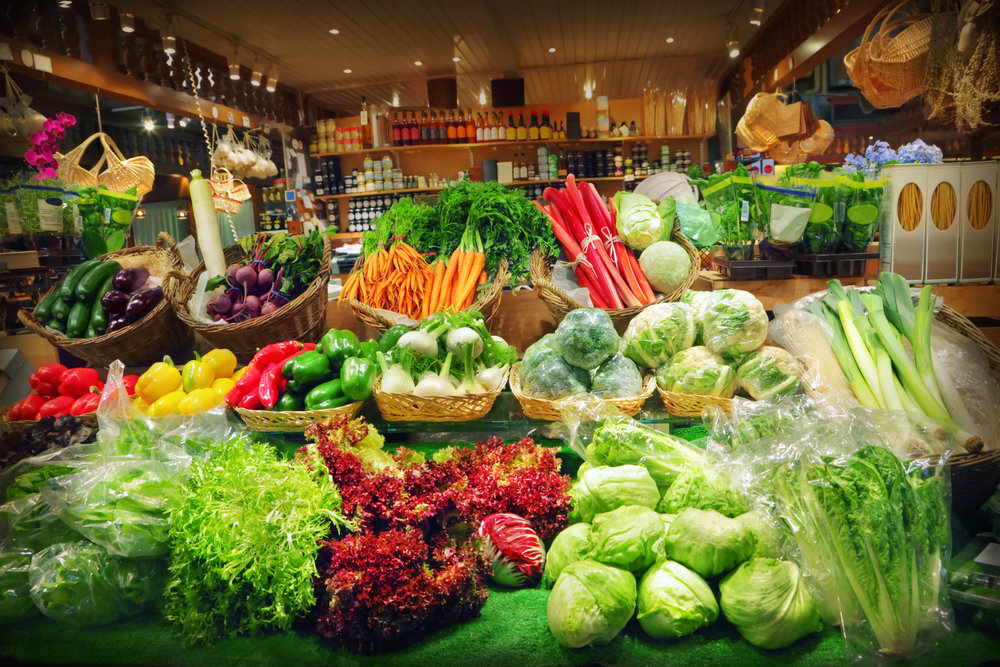By: Root Naturopath, Dr. Nicole Kilian ND, LAC
The start of a new year often coincides with a desire to adopt healthier eating habits. However, changing your diet is not an easy undertaking. I know this from personal experience and from my work as a naturopathic doctor, as dietary counseling is a large part of my practice. One of the major hurdles I face with my patients is how to fit clean, healthy eating into the budget. It’s easy to eat healthy when you have unlimited time and money. However, most of us are working with limited resources and moving toward a whole foods diet, be it paleo, vegan, flexitarian, or ketogenic, is not always easy, convenient, or cheap.
Here are some of my personal recommendations for adopting clean, healthy eating habits while being mindful of your budget. Some are geared toward people living in the Portland, Oregon metro area, but most are universal.
1. Understand that Clean Eating is An Investment
You are correct if you think eating clean is more expensive. Organic vegetables are more expensive than regular vegetables and unfortunately, processed food will probably always be cheaper. However, if we take into account the long-term financial consequences of poor health – the cost of medications alone could save you money over the long term. Expect your food bill to be higher as you are making changes, but keep in mind that it will likely come down a little once your new habits are in place. With that said, make sure the budget you set is sustainable. Organic might not fit in the budget right now, but increasing your overall vegetable intake should take priority over sticking to organic. Set up a realistic budget for what you can afford and stick to your plan once you make it. It’s better to know what you can and cannot spend rather than having sticker shock after the bill is paid.
-
Try frozen – Ideally, we would all eat fresh all the time, but the convenience and value of frozen fruits and vegetables is clear. I’m a fan of frozen Cauliflower rice which I can stir fry or throw into a soup to make it hardier.
-
Prioritize what’s organic – The Clean Fifteen and the Dirty Dozen are great lists to help you decide when it is important to buy organic. If it is not essential to buy organic, I often don’t. The EWG (Environmental Working Group) updates the list annually. I keep a copy on our meal planning board for easy reference.
-
Shop seasonally – Berries in January will be expensive since they are not in season at that time of year. Farmer’s markets are ideal for seasonal and local produce that won’t break the bank.
-
Bulk buys – Where it makes sense and won’t go to waste, consider buying things like meat, grains and some healthy packaged snacks in bulk at stores like Costco or Sam’s Club.
-
Private label – Stores like Whole Foods (both the main stores and their 365 stores), Safeway and Fred Meyer, and online retailers like Brandless, offer private label, healthy options without the premium brand price.
2. Identify Your Priorities
This is where it can be helpful to talk to a nutritionist or a naturopath about your particular health history. For some patients, I emphasize getting a lot of protein and we strategize how to do that on a budget, i.e. less expensive cuts of meat, buying in bulk, vegetarian meals. Other patients prefer a strict vegan detox where organic becomes more important. Talk to your provider and come up with a personalized eating plan.
-
Stock pre-cooked – I keep healthy, convenient foods like pre-cooked lentils and beets in my fridge so I have something healthy to pull out any time. Lentils, goat cheese and bruschetta make an easy, healthy, tasty meal.
-
Organic delivery – If organic produce is a priority, a delivery service like Organics to You or Imperfect Produce may help with convenience and staying on budget.
-
Healthy proteins – Buying in bulk can be helpful. For organic meat, Costco often has chicken and ground beef. If your priority plant-based proteins, Trader Joe’s, Whole Foods and New Seasons all offer bulk nuts, beans and seeds.
3. Planning Ahead is Key
Meal planning is essential to staying on budget. A common complaint I hear from patients is that they buy a bunch of vegetables but end up throwing them away. The way to solve this dilemma is to make a plan and stick to it.
I am a big fan of having a weekly and even a monthly meal plan. For my busy family, it is essential that everyone knows what we are supposed to be eating on a given day. Otherwise, Tuesday’s dinner gets eaten as a snack on Sunday night. My solution is a big whiteboard where I write out breakfasts, lunches, dinners, and snack ideas. During the week, I know I have more time to cook on the nights I am not at the clinic, so I plan to make extra on those nights to cover for the nights when I will be working late.
-
Reduce waste – Avoid food waste and use the whole vegetable. Carrot tops can be incorporated in a delicious pesto. I save celery and carrot ends for broth. Bones are great to save for bone broth. I keep a bone broth container in my freezer to add veggie and bones too.
-
Meal plan – Try out a couple of ways of meal planning. I have used handwritten lists, tried Google Docs, but ultimately settled on a whiteboard near the kitchen to list everything out. Find a plan that works for you.
-
Shop sales – Check out the weekly sales before you plan. I always look at meat and veggies sales (online) for the week ahead before I plan out the menu. I also try and do a monthly sweep of the pantry to look for things near expiration so I can incorporate them into my plan for the week.
4. Shop Online
I find online shopping helpful because it helps me stick to my plan, budget and avoid the pitfalls of picking up those unhealthy extras at the store. There are a variety of options available. I like being able to see how much I am spending. If the bill is getting too high, I go look in my pantry and see what I have that could substitute. It is also easy to search for coupons and compare costs. As a busy Mom, shopping from home at night allows me to make better financial and health decisions than trying to shop during the day with a screaming toddler in the store. I particularly like these stores for online grocery shopping:
-
Delivery services – For just about any grocery store, including New Seasons, Whole Foods, Safeway and Fred Meyer, among others, third party delivery services like Instacart and Grubhub offer reasonable (time = money, right?) options. You can also shop online with most of these stores and choose to pickup your goods at a set time.
-
Memberships – A Thrive Market membership provides access to thousands of healthy products a significant discount. You can also shop by criteria such as diet, or category, which is helpful. It is a recurring monthly cost, so make sure your shopping volume justifies the price of the membership and fits in your budget.
-
Meal Kits – If convenience is a priority, a meal kit delivery service like Sun Basket, Veestro, Hello Fresh and Blue Apron might be an option to explore. Although more expensive than prepping food at home, it’s often less expensive than eating out.
5. Monotony is Your Friend
When it comes to meals, decision fatigue is real. Monotony can be a saving grace to reduce the need to make decisions while also protecting the budget. Keeping meals the same, whether it’s the same lunch every day or the same breakfast, can help keep you well planned and well budgeted. This approach can also be applied to recipes. Trying out a new recipe every night can quickly lead to cooking burnout, taking the ‘joy’ right out of cooking.
-
Go-to meal – Have one staple meal that remains the same every week. We do a weekly “food bowl” at our house which has a base of sweet potatoes, veggies, and protein. It varies some, based on what we have on hand, but it serves as a ‘go-to’ meal for my family at least twice a week. Another option along these lines is to set a day of the week for a certain meal, such as soup on Sunday.
-
Simple breakfasts – Keep breakfasts simple. Avocado, with or without toast, serves as a healthy, delicious base with rotating toppings. Maybe add an egg one day, salmon the next, or cover with nuts and seeds.
-
Rotating meals – Keep a monthly rotation of meals with set shopping lists per week. This allows you to switch things up but also keeps the planning easy.
-
Use your freezer – I like to double recipes, especially soups, whenever possible and freeze half for use at a later date. This tactic often keeps us from eating out.
6. Build-in Flexibility and Convenience
Inevitably, for one reason or another, the plan doesn’t work out. Usually, I underestimate just how much food my husband can eat, or my toddler goes through a growth spurt or suddenly decides she loves broccoli (who am I to say no?). For this reason, called ‘life’, it’s important to have back-up options.
-
Take-out alternatives – At my house, that means having simple meals we can make from pantry items and favorite, prepared grocery store options that can replace take-out, such as a stir-fry from New Seasons, or a rotisserie chicken and deli salad. Food Co-Op has an amazing Chinese Medicinal Soup all winter long.
-
Affordable restaurants – Restaurant fare is always going to be more expensive but having a couple of nearby healthy and cheapish options can also be helpful. Locally, Laughing Planet is a good resource for us on nights when take-out is the only option.
7. Shop Multiple Stores
While not high on the convenience meter, making the most of low prices on key items from multiple stores can really add up in savings. There are some things I can only find at Whole Foods (Nom Nom Magic Mushroom Spice, for example), but I want to make sure I’m not buying things from Whole Foods that I might get for a lower price elsewhere. I’m limited on time (aren’t we all), so this is how I make this multiple store plan work:
-
Weekly shopping – I do my weekly shopping at my local grocery store for basics like vegetables, meat and snacks for the toddler
-
Bulk & specialty – Then stock up on for bulk and specialty items such as butter, coconut and olive oil at warehouse stores, natural or other specialty foods stores.
-
Shared lists – My husband and I share shopping lists so that if one of us hits one of the stores we don’t go to frequently, they can get everything we need.
-
Sales & coupons – I’m on the mailing list for each of these stores and try to pay attention to sales and coupons. It helps to keep the App for each store on my phone so I can check prices while I’m there.
Eating healthy on a budget is a challenge, but the benefits are well worth the effort. It’s important to outline what you can spend and to discuss your priorities with significant others if you are making the changes related to health concerns. As providers, we’re here to make our recommendations work in your life. Eating healthy might not be the cheapest way to go, but it can be affordable and convenient with a little planning and a little troubleshooting.


